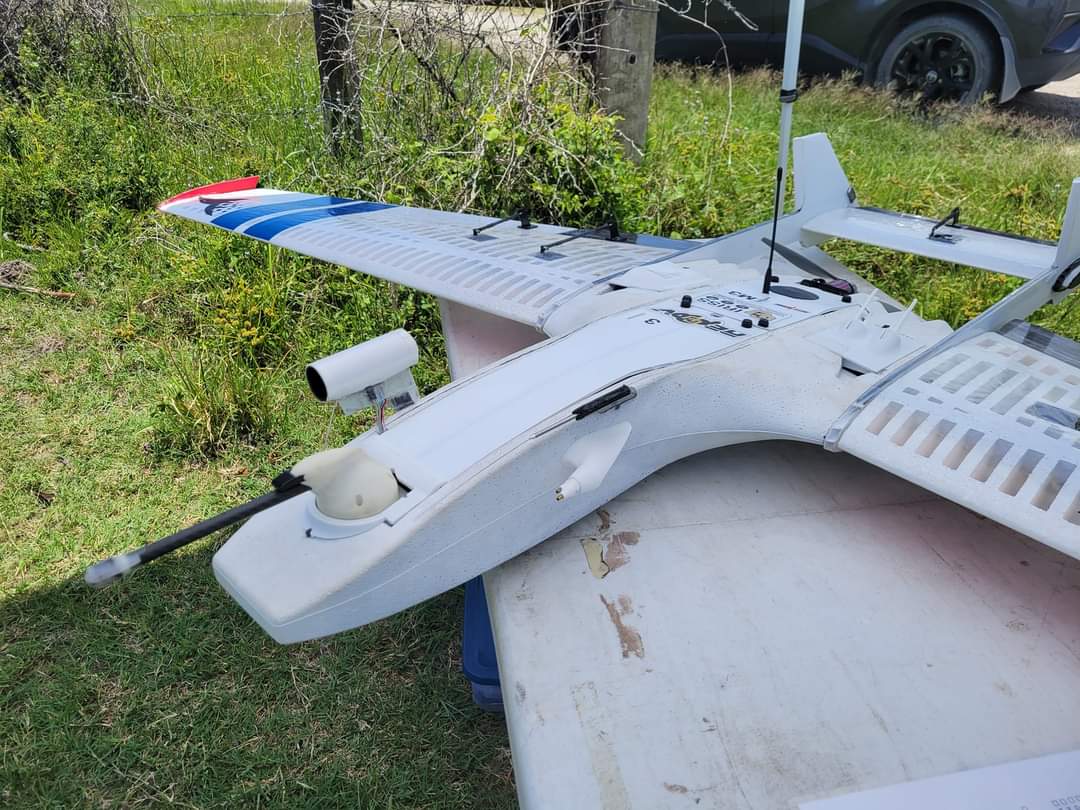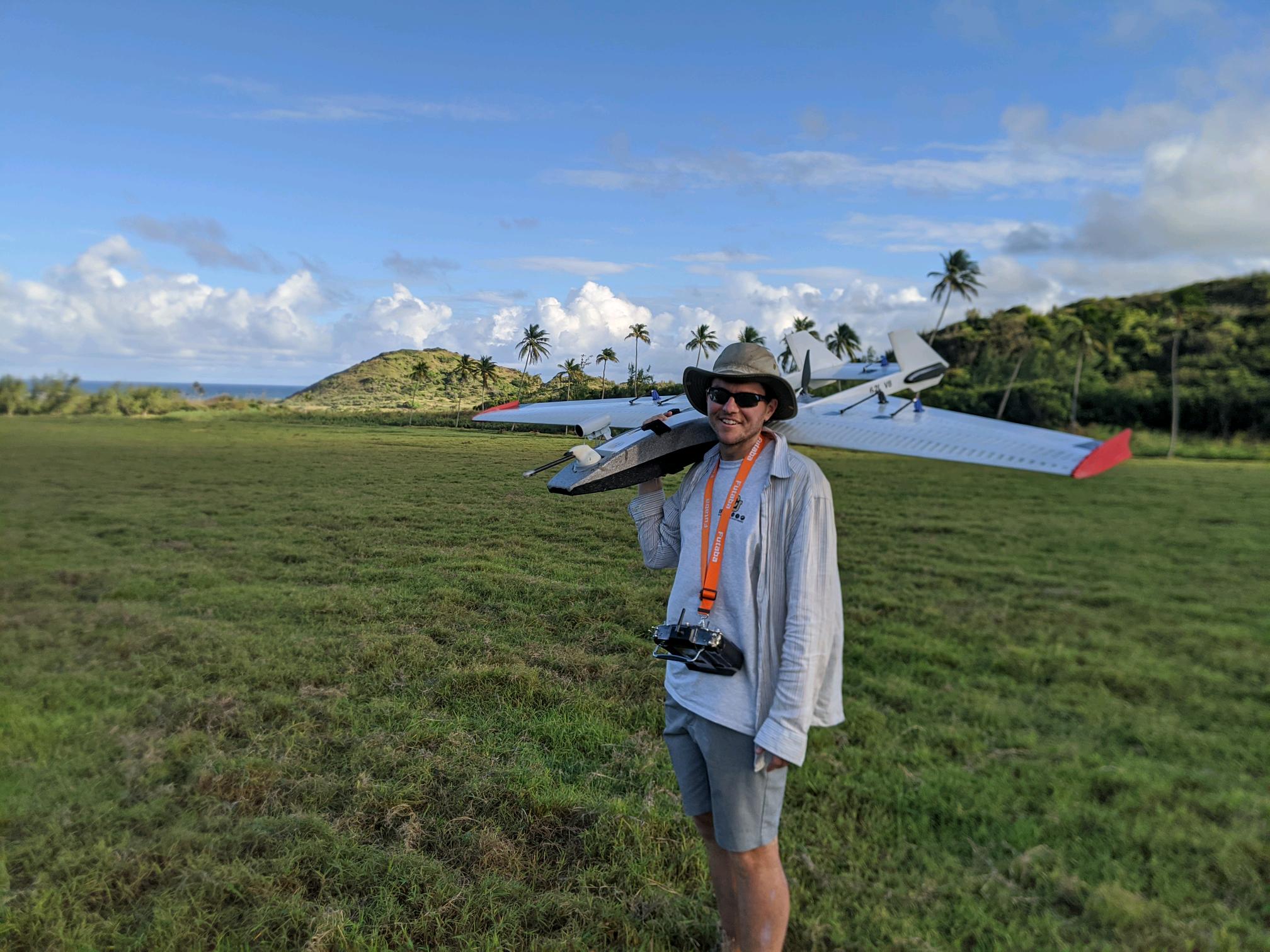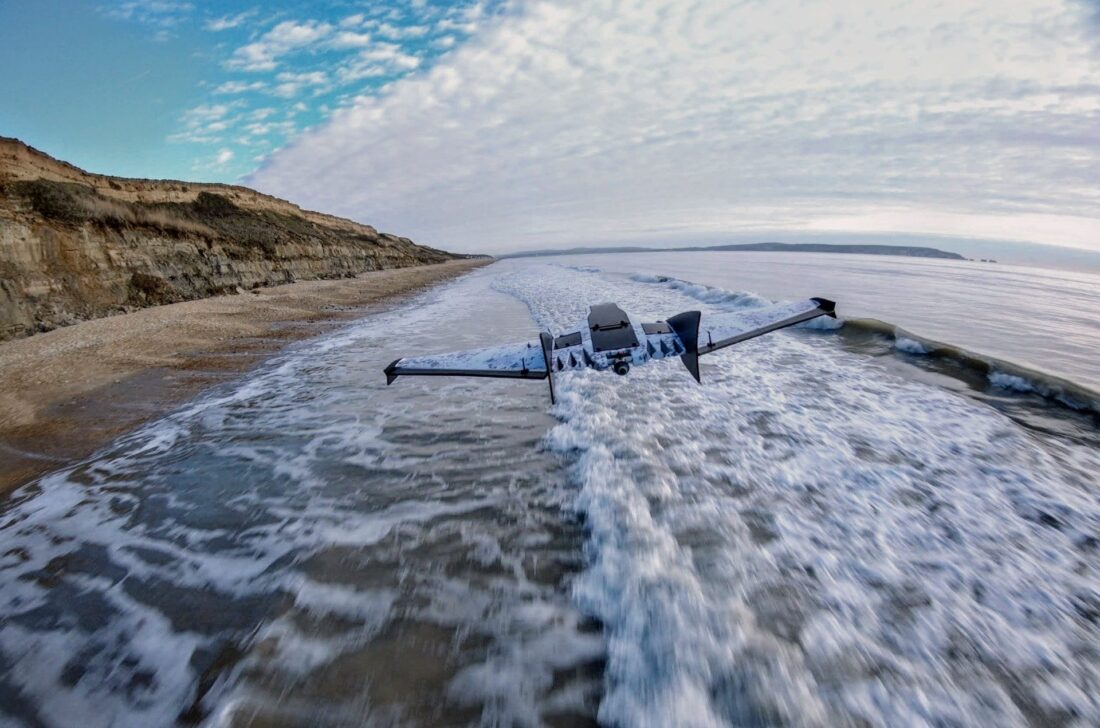How a Storm-Chasing UAV Designed for Climate Studies Became a Star in Twisters, While Maintaining Its Crucial Role in Atmospheric Research
by DRONELIFE Features Editor Jim Magill
For Professor Brian Argrow, the 2024 Super Bowl was an exciting event – not only for the big game itself – but it marked the first time he realized that a version of the drone he and his academic colleagues had been flying to study supercell storms would be portrayed in a big Hollywood blockbuster movie.
The unmanned aerial vehicle seen flying into the teeth of violent storms in the hit movie Twisters was designed and built by Chris Klick, owner of Ritewing Aeroworks. It’s the same aircraft design that Klick used for building the RAAVEN [Robust Autonomous Aerial Vehicle-Endurant Nimble] drone, used by Argrow and other climate scientists for atmospheric research in real life.


Argrow, a professor of Aerospace Engineering Sciences at the University of Colorado Boulder, said he was first approached in the spring of 2023 by representatives of a movie company that was working on a sequel to the classic movie Twister, who wanted to use a drone in the film.
“I didn’t really take all that seriously. I didn’t think it was anything big,” he said. Argrow put the movie company representatives in touch with Klick and didn’t think more about the encounter.
“I hadn’t heard from them in months and I still didn’t know what the situation was with the movie. And so, I watched the Super Bowl and then at halftime I was getting up to leave the room and the trailer for Twisters comes on,” Argrow recalled. “I thought, ‘Oh, this really is a movie, in fact, this is a Super Bowl commercial so it must be a big movie.’”
When he saw the RAAVEN come on to his TV screen, Argrow texted his colleagues who work with him in the study of super storms to let them know that the drone they deployed would have a big part in a major Hollywood film.
Adam Houston, one of the colleagues the Argrow contacted, said he was pleased to learn that the RAAVEN would be featured in a film about chasing tornadoes. He said the RAAVEN models used in his work are well-adapted to endure the punishment that violent weather dishes out.
“It’s not high-aspect ratio, but it flies pretty fast and it has great endurance. So, we’re able to get in excess of two hours of flight time with the aircraft,” said Houston, a professor of Earth and Atmospheric Sciences at the University of Nebraska-Lincoln.
“And it’s tough. If it crashes, because it does crash, it’s pretty robust. We’ve crashed it before, pulled it out of the dirt, made sure it’s fine, and it didn’t require significant modifications to get it back to being airworthy.”
Houston, who also had met with representatives of the film company last year, said he was concerned that the film makers portrayal of the RAAVEN might not accurately reflect its use in the real world.
He said he had outlined for the movie company representatives the difference between professional atmospheric researchers, like Argrow and himself, and storm chasers, non-academic people who pursue tornados in search of videos that they post online for clicks. After seeing the film, Houston said his early concerns were at least partially justified.
“To a large extent the way they used [the RAAVEN] in the movie was just to take video and, and take photos and not to collect data,” he said. “It’s very different than what we’re trying to do. We’re trying to get into the storm to collect data. If videos and photos are collected, that’s fine, but that’s not the main focus.”
However, Houston said he was happy with the film’s overall portrayal of the use of the RAAVEN. “I was impressed with the accuracy. I think they made the distinction between scientific researchers and professional chasers pretty clear and pretty accurately.”
Film version differs from drone’s real-world use
Klick, who built several working RAAVEN models for the movie company, had his reservations about their use in the film as well. “It wasn’t really used like I thought it was going to be used in the movie,” he said.
He said Twisters didn’t highlight the role the RAAVEN plays in scientific research, which is what it was primarily designed for. “The aircraft have been used for years. They’ve been used at the North Pole, the South Pole, in tornado chasing, atmospheric research in the Bahamas and doing testing on trade winds,” he said.


The RAAVEN is designed to be lightweight and easily transportable into relatively inaccessible environments, yet tough enough to withstand the furies of nature. It can be driven to its takeoff site and sent airborne via a launcher mounted on top of a vehicle, as accurately portrayed in the movie.
“When they’re chasing tornadoes, they need to get it off in an instant,” Klick said. He added that the aircraft can be landed virtually anywhere, such as on dirt roads or agricultural fields.
“They can land it in very, very harsh areas without sustaining damage,” he said. Any minor damage the RAAVEN sustains in flight or upon landing can be easily fixed. “You don’t need super high-tech people to actually do basic repairs on these aircraft because they’re so robust and easy to repair.”
The RAAVEN fuselage is built of expanded polypropylene (EPP) foam, the material used in molded bumpers on newer cars. The EPP provides outstanding energy absorption, high impact resistance and thermal insulation and has an exceptionally high strength-to-weight ratio. The batteries and power train of the aircraft are situated inside the drone to provide room in the nose for instruments.
In the field, the RAAVEN works in concert with a ground-based observer, traveling below the drone in a chase vehicle equipped with instruments that measure temperature, humidity, winds and atmospheric pressure at the surface, while the aircraft records similar conditions aloft.
“So, you have this mobile tower, essentially,” said Houston.
RAAVEN wins NSF award
As far as the RAAVEN’s use in real-world research the future is bright. Argrow said the consortium of researchers just recently received an award from the National Science Foundation, which will facilitate the aircraft’s use in future research projects. “The RAAVEN and its support equipment is now officially funded in part by the National Science Foundation’s Community Instruments program,” he said.
Under that program, the UC Boulder and UN-Lincoln researchers will collaborate with other scientists affiliated with the NSF and deploy the RAAVEN aircraft to collect data for their scientific campaigns.
Click, who built the aircraft used in the movie, said that while he was happy to see the fruits of his labor on the screen, his one regret is that he didn’t see his name or that of his company in the movie’s closing credits.
“I got to know the production guys pretty good and I had to sign waivers to put the aircraft in the movie,” he said. “I guess there’s a lot of stuff in the movie. They can’t give kudos to every single thing like lug nuts and tires.”
Read more:

 Jim Magill is a Houston-based writer with almost a quarter-century of experience covering technical and economic developments in the oil and gas industry. After retiring in December 2019 as a senior editor with S&P Global Platts, Jim began writing about emerging technologies, such as artificial intelligence, robots and drones, and the ways in which they’re contributing to our society. In addition to DroneLife, Jim is a contributor to Forbes.com and his work has appeared in the Houston Chronicle, U.S. News & World Report, and Unmanned Systems, a publication of the Association for Unmanned Vehicle Systems International.
Jim Magill is a Houston-based writer with almost a quarter-century of experience covering technical and economic developments in the oil and gas industry. After retiring in December 2019 as a senior editor with S&P Global Platts, Jim began writing about emerging technologies, such as artificial intelligence, robots and drones, and the ways in which they’re contributing to our society. In addition to DroneLife, Jim is a contributor to Forbes.com and his work has appeared in the Houston Chronicle, U.S. News & World Report, and Unmanned Systems, a publication of the Association for Unmanned Vehicle Systems International.
Miriam McNabb is the Editor-in-Chief of DRONELIFE and CEO of JobForDrones, a professional drone services marketplace, and a fascinated observer of the emerging drone industry and the regulatory environment for drones. Miriam has penned over 3,000 articles focused on the commercial drone space and is an international speaker and recognized figure in the industry. Miriam has a degree from the University of Chicago and over 20 years of experience in high tech sales and marketing for new technologies.
For drone industry consulting or writing, Email Miriam.
TWITTER:@spaldingbarker
Subscribe to DroneLife here.


